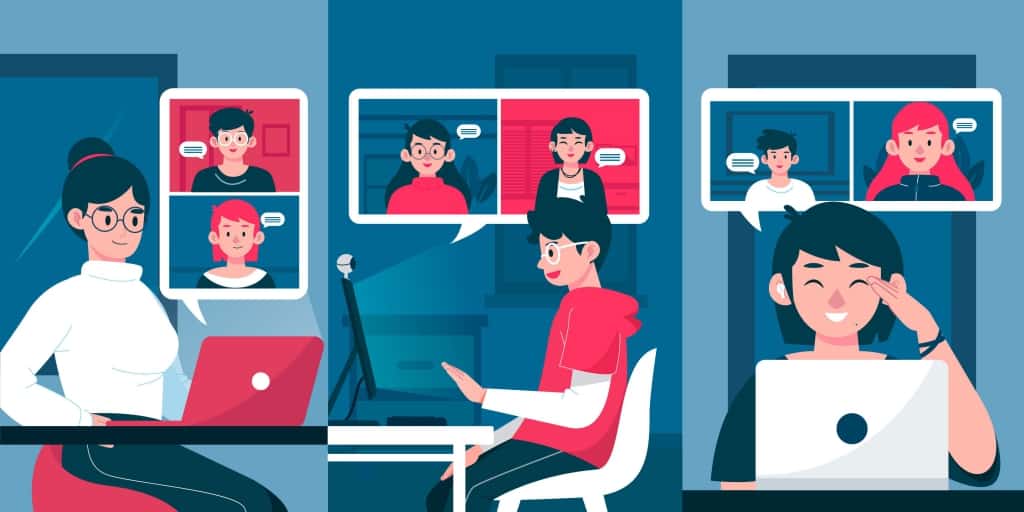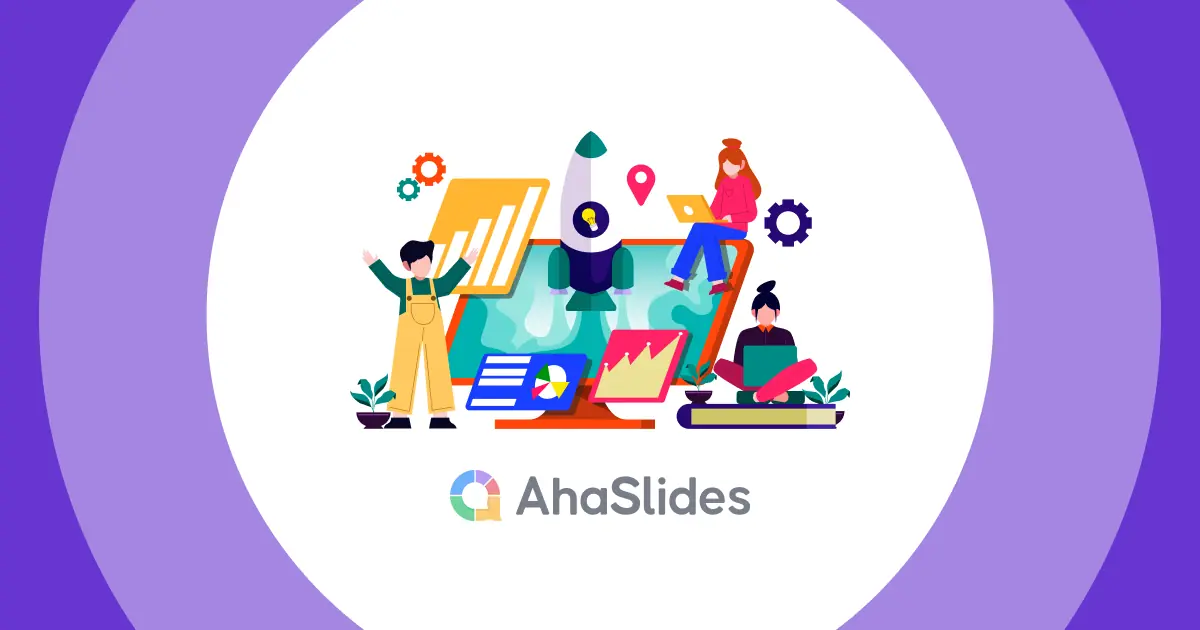Work challenges examples? - Have you ever grappled with misunderstandings, differences in working styles, the struggle to communicate, or even balance individual contributions with team goals?
You're not alone. In this article, we'll delve into work challenge examples, shedding light on why they arise and providing practical tips to help you overcomes challenges at the workplace.
Table Of Contents
- Why Is It Common For People To Face A Variety Of Work Challenges?
- What Are Some Common Work Challenge Examples?
- Tips To Overcome Work Challenges
- Final Thoughts

Tips for Better Engagement
- Cross Functional Team Management
- Type of team
- High-Performing Teams
- Rest Day Quotes
- David Mcclelland Theory

Get your Employees Engaged
Start meaningful discussion, get useful feedback and appreciate your employees. Sign up to take free AhaSlides template
🚀 Grab Free Quiz☁️
Why Is It Common For People To Face A Variety Of Work Challenges?
Work challenges aren't a reflection of your strength or intelligence, but rather a result of the intricate and ever-changing nature of work environments. These complexities encompass a variety of tasks, responsibilities, and shifting circumstances. Challenges can arise regardless of an individual's inherent abilities. So, facing work challenges is actually an opportunity for personal growth, learning, and honing your skills.
What Are Some Common Work Challenge Examples?
Challenges With Diversity In The Workplace

Picture your workplace as a colorful mix of people from all walks of life – different backgrounds, experiences, and ways of looking at things. It's like a super team with endless potential! However, along with enriching collaborations are specific challenges. Some common challenges related to workplace diversity include:
- Cultural Misunderstandings: Lack of awareness about diverse cultures and customs can unintentionally cause offense or confusion among team members.
- Biases and Stereotypes: Unconscious biases and stereotypes can affect decision-making and interactions, hindering fair treatment and collaboration.
- Language Barriers: When team members speak different languages, effective communication may require extra effort to bridge language gaps.
- Cultural Norms: Different cultural norms and working practices can impact how tasks are approximated, affecting efficiency and understanding.
- Lack of Representation: When certain groups are underrepresented, their unique viewpoints may not be fully considered in decision-making.
Communication Issues At the Workplace
Effective communication is key, but challenges can arise due to misinterpretation, language barriers, or ineffective channels. Here are some common communication challenges that can arise in the workplace:
- Language Barriers: In a diverse workforce, language differences can hinder effective communication and lead to misunderstandings.
- Lack of Clarity: Unclear or vague communication can result in incomplete tasks or mistakes.
- Poor listening: When people do not listen attentively, it can lead to missed information and missed opportunities.
- Digital Overload: Constant emails, messages, and notifications can lead to information overload and missed important details.
- Passive-aggressive communication: When people communicate indirectly or indirectly, it can create confusion and resentment.
- Disruptive communication: When people interrupt or talk over others, it can be disrespectful and prevent productive communication.
- Cultural differences: When people come from different cultures, they may have different communication styles and expectations. This can lead to misunderstandings and conflict.
Challenges Of Virtual Teams

Virtual teams can be a great way to collaborate and share ideas, but they also present some challenges.
- Lack of Face-to-Face Interaction: The absence of in-person interactions can hinder relationship-building, trust, and understanding among team members.
- Time Zone Differences: Coordinating across different time zones can make scheduling meetings and collaboration more complex.
- Technology Issues: Technical glitches, connectivity problems, or unfamiliarity with virtual tools can disrupt workflow and communication.
- Isolation and Engagement: Team members might feel disconnected or isolated, affecting their motivation and engagement levels.
- Decision-Making Delays: Virtual environments can slow down decision-making processes due to asynchronous communication.
- Work-Life Balance Struggles: The boundary between work and personal life can blur, leading to burnout and reduced well-being.
- Training and Onboarding: Integrating new members or providing training remotely might be less effective than in-person approaches.
- Security Concerns: Sharing sensitive information digitally can raise security and privacy concerns.
Challenges Of Hybrid Working
Here are the challenges commonly associated with hybrid working:
- Communication Imbalances: Maintaining effective communication between in-office and remote workers can lead to misalignment and information gaps.
- Team Cohesion: Building a cohesive team culture becomes trickier when some team members work remotely and others are in the office.
- Performance Measurement: Evaluating the performance of remote workers can be more complex than assessing those working in the office.
- Management Challenges: Supervising a hybrid team demands a balance of leadership styles that cater to both in-person and remote needs.
- Collaboration and Creativity: Spontaneous interactions and brainstorming sessions can be hindered when team members are not physically together.
Challenges Faced By Women At Workplace

Women's contributions in the workplace are paving the way for a better tomorrow, where equality and endless opportunities shine. Yet, they encounter various obstacles.
- Gender Bias: Stereotypes and biases can affect perceptions of women's capabilities and limit opportunities for advancement.
- Pay Inequality: Women often earn less than their male counterparts for the same roles and responsibilities.
- Lack of Representation: Underrepresentation of women in leadership roles and decision-making positions can hinder career progression.
- Work-Life Balance: Balancing family responsibilities and work expectations can be particularly challenging for women.
- Unconscious Bias: Implicit biases may impact evaluations, assignments, and career advancement opportunities.
- Stereotype Threat: Fear of confirming negative stereotypes about women's abilities can affect performance.
- Double Standards: Higher expectations or stricter judgments based on gender can be discouraging.
- Harassment and Discrimination: Instances of workplace harassment or discrimination can create a hostile environment.
Tips To Overcome Work Challenges
Overcoming work challenges is a crucial skill that empowers individuals to thrive in the ever-evolving professional landscape. Whether it's communication hiccups, virtual team dynamics, or gender disparities, there are effective strategies to navigate these hurdles and emerge stronger.
1/ Open Communication
Clear and transparent communication is key. Regularly touch base with colleagues, supervisors, or team members to ensure everyone is on the same page. Encourage open dialogue, active listening, and feedback to address issues promptly.
2/ Embrace Technology
In a digital age, it's essential to acquaint yourself with a range of virtual tools and platforms. Consider seeking training to elevate your technical skills and effectively address common issues, contributing to a seamless experience in remote collaboration.
Tools like AhaSlides can prove particularly valuable, offering interactive features and pre-made templates that enhance engagement and communication within virtual teams. By harnessing these innovative resources, you can navigate work challenges with greater ease and efficiency.

3/ Cultural Sensitivity
In diverse workplaces, respect and understanding are paramount. Educate yourself about different cultures, communication styles, and customs to bridge gaps and foster inclusivity.
4/ Flexibility and Adaptability
Embrace change with an open mind. Stay flexible in your approach, be willing to learn new methods, and adapt to shifting circumstances.
5/ Work-Life Balance
Establish clear boundaries between work and personal life. Allocate time for self-care, hobbies, and spending quality time with loved ones to recharge and maintain well-being.
6/ Network and Mentoring
Build a strong network of peers and mentors. Their guidance, experiences, and insights can provide valuable guidance in overcoming challenges.
7/ Resilience
Approach challenges with resilience and a positive attitude. View setbacks as learning opportunities and celebrate your successes, no matter how small.
Final Thoughts
Hope this article helps you have a clearer view of work challenge examples. Every challenge we face offers an opportunity to learn, adapt and become stronger. By directly addressing these challenges, we pave the way for innovation, resilience, and continuous improvement. With every challenge we overcome, we shape a brighter future marked by personal progress and achievement.
Ref: Vatage Circle | Careerwise








